
Brief History of Nursing Informatics in Canada
"Registered nurses need to be able to demonstrate their unique contribution
to the health of Canadians within Canada's rapidly evolving health care system.
Basic, essential nursing information is required by nurses, employers, researchers,
educators, policy makers, and clients so that informed decisions can be made
about nursing's role in the changing health care system,"
- Canadian Nurses' Association, 1993:
Policy Statement on Health Information: Nursing Components, p. 1.
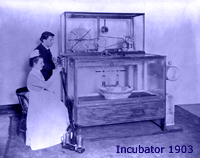 The CNA wrote this policy statement to highlight the importance of developing the nursing data components that will be included in our emerging national health information system. The CNA has also spearheaded an initiative, the
National Nursing Informatics Project, to begin to develop a national consensus on definition, competencies, and educational strategies and priorities. The CNA wrote this policy statement to highlight the importance of developing the nursing data components that will be included in our emerging national health information system. The CNA has also spearheaded an initiative, the
National Nursing Informatics Project, to begin to develop a national consensus on definition, competencies, and educational strategies and priorities.
The use of technology in nursing is not new, in fact nurses have become proficient in utilizing and adapting complex technology into caring nursing practice for decades, at least since the time of Florence Nightingale in the United Kingdom and even earlier, when Jeanne Mance (1606-1673) founded the first hospital in Montreal, 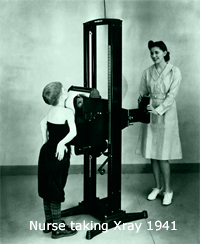 Canada in 1642. Various forms of machinery such as ventilators and physiological monitors were first used in intensive and critical care settings, and are now currently used in adapted form in less acute areas, even in home care. Nursing has evolved significantly over the past few decades, with many of the changes being driven by advances in information and communication technology (ICT). ICT has permeated all aspects of society, including health care and affects all members of the interdisciplinary health team. Since nurses are the largest group of health care providers, discipline-specific competencies in the use of ICT and other technologies are imperative. This realization has catalyzed the steady development of nursing informatics. “Nurses in Canada have made an enormous contribution to all aspects of Canadian society. Their involvements have influenced the wider social, economic and political history of Canada, as well as the history and politics of health care. Nursing history provides the public with valuable perspectives on emerging technologies, health care reform and gender issues in Canadian history” (Canadian Nurses Association, 2004, p. 2). Canada in 1642. Various forms of machinery such as ventilators and physiological monitors were first used in intensive and critical care settings, and are now currently used in adapted form in less acute areas, even in home care. Nursing has evolved significantly over the past few decades, with many of the changes being driven by advances in information and communication technology (ICT). ICT has permeated all aspects of society, including health care and affects all members of the interdisciplinary health team. Since nurses are the largest group of health care providers, discipline-specific competencies in the use of ICT and other technologies are imperative. This realization has catalyzed the steady development of nursing informatics. “Nurses in Canada have made an enormous contribution to all aspects of Canadian society. Their involvements have influenced the wider social, economic and political history of Canada, as well as the history and politics of health care. Nursing history provides the public with valuable perspectives on emerging technologies, health care reform and gender issues in Canadian history” (Canadian Nurses Association, 2004, p. 2).
Nursing informatics began to evolve as nurses participated in the early initiatives in hospital information system adoption in various health agencies across the nation. As these systems improved, specialized nursing components and even free-standing nursing information systems began to sprout up. Early systems were primarily imported from other countries, especially the USA. By the late 1980s, most hospitals had at least a rudimentary information system that required nurses to enter common data such as admission profiles and basic care requirements like diet, medications, and treatments into a computer as part of their routine duties.
The National Nursing Informatics Project
 In 1998, the Canadian Nurses Association spearheaded another initiative, the National Nursing Informatics Project, to begin to develop a national consensus on definition, competencies, and educational strategies and priorities in nursing informatics development. "In 1998 a national steering committee was formed to address Nursing Informatics issues and develop strategies to ensure that Registered Nurses have the competencies required to successfully carry out the responsibilities of their practice - whether that be clinical, administrative, educational or research. The committee membership represented the Canadian Association of University Schools of Nursing, Canadian Nurses Association, Registered Nurses Association of British Columbia, Academy of Canadian Executive Nurses and the COACH Nursing Informatics Special Interest Group. Each participating organization appointed a nurse expert in Nursing Informatics to a five-member working group to develop and initiate a plan to: In 1998, the Canadian Nurses Association spearheaded another initiative, the National Nursing Informatics Project, to begin to develop a national consensus on definition, competencies, and educational strategies and priorities in nursing informatics development. "In 1998 a national steering committee was formed to address Nursing Informatics issues and develop strategies to ensure that Registered Nurses have the competencies required to successfully carry out the responsibilities of their practice - whether that be clinical, administrative, educational or research. The committee membership represented the Canadian Association of University Schools of Nursing, Canadian Nurses Association, Registered Nurses Association of British Columbia, Academy of Canadian Executive Nurses and the COACH Nursing Informatics Special Interest Group. Each participating organization appointed a nurse expert in Nursing Informatics to a five-member working group to develop and initiate a plan to:
- develop consensus on a definition of Nursing Informatics for Canada;
- recommend Nursing Informatics competencies for entry level nurses and specialists, managers, educators, and researchers;
- identify curriculum implications and strategies for both basic and continuing nursing education; and
- determine priorities for implementing national nursing informatics education strategies.
The first phase of the project was the development of a Discussion paper in 1999, and the collection of feedback on key issues related to nursing informatics competencies development from Canadian nurses.
Nursing Minimum Data Set
 The Nursing Minimum Data Set was the first major Canadian Nurses Association informatics initiative beginning in 1990. This was in response to the strong conviction that nursing data must be included in the centralized national health data system being planned by the Canadian Institute of Health Information (CIHI) described in Chapter 2.”Registered nurses, as the single largest group providing health care services, play a major role in health care in Canada. Incredibly, this contribution is not abstracted from client records and saved in a permanent database of health information. Most health care data collected in Canada include medical diagnoses and interventions but do not reflect the contribution of other health care professionals. Decisions are made in the absence of data reflecting the value of nursing” (Canadian Nurses Association, 2000, p. 5). .The Canadian Nurses Association considered it imperative that nursing data, that distinctly reflected nursing care became part of the permanent health record being designed for the nation. “The impact of nursing should be captured in national health care databases through the use of effective nursing classification systems” (Canadian Nurses Association, 2003, p. 1). The Nursing Minimum Data Set was the first major Canadian Nurses Association informatics initiative beginning in 1990. This was in response to the strong conviction that nursing data must be included in the centralized national health data system being planned by the Canadian Institute of Health Information (CIHI) described in Chapter 2.”Registered nurses, as the single largest group providing health care services, play a major role in health care in Canada. Incredibly, this contribution is not abstracted from client records and saved in a permanent database of health information. Most health care data collected in Canada include medical diagnoses and interventions but do not reflect the contribution of other health care professionals. Decisions are made in the absence of data reflecting the value of nursing” (Canadian Nurses Association, 2000, p. 5). .The Canadian Nurses Association considered it imperative that nursing data, that distinctly reflected nursing care became part of the permanent health record being designed for the nation. “The impact of nursing should be captured in national health care databases through the use of effective nursing classification systems” (Canadian Nurses Association, 2003, p. 1).
Raising Canadian Nursing Awareness
 The Canadian Nurses Association released a number of other supportive documents in 2001. A key one was published in the September Nursing Now Bulletin, entitled: What is Nursing Informatics and why is it so important? This publication was a critical overview of the essential characteristics of the emerging field of nursing informatics in Canada. It also introduced a definition of nursing informatics, formulated by the National Nursing Informatics Project working group. “Nursing Informatics (NI) is the application of computer science and information science to nursing. NI promotes the generation, management and processing of relevant data in order to use information and develop knowledge that supports nursing in all practice domains” (Canadian Nurses Association, 2001, p.1). The Canadian Nurses Association released a number of other supportive documents in 2001. A key one was published in the September Nursing Now Bulletin, entitled: What is Nursing Informatics and why is it so important? This publication was a critical overview of the essential characteristics of the emerging field of nursing informatics in Canada. It also introduced a definition of nursing informatics, formulated by the National Nursing Informatics Project working group. “Nursing Informatics (NI) is the application of computer science and information science to nursing. NI promotes the generation, management and processing of relevant data in order to use information and develop knowledge that supports nursing in all practice domains” (Canadian Nurses Association, 2001, p.1).
Another influential group, the Canadian Institute for Health Information (CIHI) also plays a unique and crucial role in the development of this new Canadian health information system. CIHI has described its' role as:
1. Setting National standards for financial, statistical, and clinical data
2. Setting National standards for health information technology,
3. Collecting, processing, and maintaining health related databases and registries
The CIHI links federal, provincial, and territorial governments with non-government, health-related groups. Rhial LeBlanc, President and
Chief Executive Officer of CIHI described the organization as having one main focus, "The work of health care facilities and professionals
is what CIHI supports, and truly improving that service is our constant objective," (1996, p.1). LeBlanc was clear that CIHI exists to "...serve
all elements of Canada's health care system in an equal and responsive way." Even though CIHI was initially formed by federal, provincial,
and territorial Ministers of Health, the Institute has been given latitude to grow and chart it's own course. CIHI members have chosen to keep
at "arms-length" from the various levels of government and do not report directly to government officials. The Canadian Nurse's Association
(CNA) and the provincial nursing associations plan to link more and more with CIHI in the future.
The CIHI helped introduce the Strategic Plan for Health Information Management in British Columbia in 1996 that provides guidelines for holistic assessment and processing of information. The Plan is based on the four domains of people, environment, health system and processes. In 1995, the CIHI initiated a project to provide a cohesive set of guidelines for Canadian health information privacy. In 1999, a second edition of these guidelines was produced, which incorporated issues related to the advancement of health information and techology. In 2002, an updated version Privacy and Confidentiality of Health Information at CIHI: Principles and policies for the protection of health information , the 3rd edition is available in PDF (437 k) format
 In March 2000, the CIHI published an updated version of the Roadmap Initiative, a national vision and four-year action plan to
modernize Canada's health information system. Led by CIHI, this Initiative is a collaborative effort with Statistics Canada, Health Canada
and many other groups at the national, regional and local levels. In March 2000, the CIHI published an updated version of the Roadmap Initiative, a national vision and four-year action plan to
modernize Canada's health information system. Led by CIHI, this Initiative is a collaborative effort with Statistics Canada, Health Canada
and many other groups at the national, regional and local levels.
The CIHI also provide a comprehensive Goodsourcing Statistics website related to Canadian health and health care, society, the environment and National populations. Dozens of other reports are available on the CIHI website, related to population health, health indicators, health workforce, issues in health and health care institutions.
Another national organization, the Canadian Organization for the Advancement of Computers in Health or
COACH, founded in 1975, has actively initiated professional protocols for using computer systems in Canadian health care. One important document,
Guidelines to Promote Confidentiality and Security of Automated Health-related Information (1979), has been incorporated into the
national accreditation guidelines approved by the Canadian Council of Health Facilities Association in 1991. These guidelines
were also supported by the CNA in 1993.
 In 2001, COACH, as Canada's Health Informatics Association, launched the Patron Program.
As an individual member based organization, COACH promotes understanding and effective utilization of information
and information technologies within the Canadian Healthcare industry through education, information, networking and
communication. With the development of the Patron program, members are hoping to build stronger links between COACH
and private and public enterprise in pursuit of this mission. It is an opportunity for corporations to join in partnership with
COACH. COACH's vision is to be THE catalyst in advancing the practice of health information management in Canada. In 2001, COACH, as Canada's Health Informatics Association, launched the Patron Program.
As an individual member based organization, COACH promotes understanding and effective utilization of information
and information technologies within the Canadian Healthcare industry through education, information, networking and
communication. With the development of the Patron program, members are hoping to build stronger links between COACH
and private and public enterprise in pursuit of this mission. It is an opportunity for corporations to join in partnership with
COACH. COACH's vision is to be THE catalyst in advancing the practice of health information management in Canada.
Today, COACH is a leading organization with an evolving membership. It is in the forefront of the Canadian
Healthcare information resource and technology field by working cooperatively with health institutions, professions, associations,
consultants, vendors of information technology and applications, government and regulatory organizations in the pursuit of its
mandate.
The backgrounds of COACH members range from health executives, physicians, nurses and allied health professionals,
researchers and educators to information systems managers, technical experts, consultants, and information technology vendor
representatives. Organizations represented include the broad range of healthcare institutions, community and public health,
private practice, government, consulting firms, commercial providers of information and telecommunications technologies,
educational institutions and industry.
In February 1999 the Canadian Federal government published the timely document, Strengthening Health Care for Canadians, outlining new initiatives and funding to promote health care technology and informatics initiatives.
Various nursing programs are beginning to offer courses and content in Nursing Informatics. Some programs integrate informatics into individual courses, which is the model we have adopted in the BSN Nursing Program at Kwantlen. Others offer individual stand alone courses which provide computer skills and some theory.
Slowly but steadily, other colleges and universities are expanding their curricula to include Nursing Informatics at both the
undergraduate and graduate levels. As more nurses become computer literate, and become aware of the potential of technology to support nursing documentation, decisions,
and professionalism, Nursing Informatics can become a strong and integral part of Canadian nursing science. With this goal in mind, the
The BSN Nursing Programs have adopted Nursing Informatics as an integral component of the curriculum.
The Canadian Nursing Informatics Association
 In 2001, a new group, the Canadian Nursing Informatics Association (CNIA) received emerging group status from the CNA and affiliate status in 2003. The CNIA now has full associate status with the CNA. The CNIA has a website and the executive board encourages new members, including student members. A Kwantlen nursing faculty was a longtime member of the CNIA Executive Board. June Kaminski (Kwantlen Polytechnic University, author of this informatics curriculum) was Director of Communications (and designer of the CNIA website) from 2003 to 2012 and President of the Association in 2008 and 2009. In 2001, a new group, the Canadian Nursing Informatics Association (CNIA) received emerging group status from the CNA and affiliate status in 2003. The CNIA now has full associate status with the CNA. The CNIA has a website and the executive board encourages new members, including student members. A Kwantlen nursing faculty was a longtime member of the CNIA Executive Board. June Kaminski (Kwantlen Polytechnic University, author of this informatics curriculum) was Director of Communications (and designer of the CNIA website) from 2003 to 2012 and President of the Association in 2008 and 2009.
The mission of the CNIA is to be the voice for Nursing Informatics in Canada. Recognizing the importance of the work the CNIA is undertaking, the Canadian
Nurses Association has granted associate group status to the CNIA. The CNIA is also affiliated with COACH, Canada's National Health Informatics Association. Through this strategic alliance CNIA is the Canadian nursing nominee to the International Medical Informatics Association - Special Interest Group in Nursing Informatics (IMIA-SIGNI).
The CNIA conducted a study in 2002 - 2003 on the Informatics Educational Needs of Canadian Nurses, funded by the Office of Health and the Information Highway, Health Canada or OHIH called Educating Tomorrow's Nurses: Where's Nursing Informatics?
The intent of the study was to describe the current state of:
- informatics education opportunities currently available to students of nursing across the country,
- the level of preparedness of nursing faculty to deliver these offerings,
- information and communication technology infrastructure and support for faculty in
delivering these offerings, and
- opportunities to enhance nursing curricula, faculty preparedness, and ICT infrastructure and support in schools of nursing across Canada.
The study was conducted across Canada and included a representative sample of nursing schools from across the country.
The Canadian Journal of Nursing Informatics
 A Kwantlen nursing faculty, June Kaminski (author of this informatics curriculum) launched the Canadian Journal of Nursing Informatics in 2006, which invites papers, multimedia, and other electronic media focused on the diverse arena of nursing informatics. A Kwantlen nursing faculty, June Kaminski (author of this informatics curriculum) launched the Canadian Journal of Nursing Informatics in 2006, which invites papers, multimedia, and other electronic media focused on the diverse arena of nursing informatics.
The Mission of The Canadian Journal of Nursing Informatics is to provide a peer - reviewed venue for Canadian nurses and researchers who work with Nursing Informatics to disseminate their research, essays, reviews, presentations, multimedia and other digital publishable materials on a global scale. We have decided to offer this journal free of charge in order to make informatics research and theory openly available to all Canadian nurses.
The Canadian Nurses Portal Project, NurseONE, E-Nursing Strategy
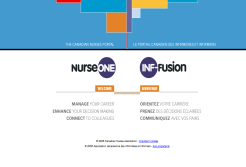 Over the last two decades Canadian leaders in nursing informatics have discussed and conceptualized a nation wide nursing informatics strategy that would benefit all nurses and nursing students. In 2006, the Canadian Nurses Association launched the Canadian Nurses Portal Project, shortened to NurseONE (and currently called MyCNA) to address this vision, in the form of a e-nursing strategy. “The purpose of the e-nursing strategy is to guide the development of ICT initiatives in nursing to improve nursing practice and client outcomes” (Canadian Nurses Association, 2006, p. 7). Over the last two decades Canadian leaders in nursing informatics have discussed and conceptualized a nation wide nursing informatics strategy that would benefit all nurses and nursing students. In 2006, the Canadian Nurses Association launched the Canadian Nurses Portal Project, shortened to NurseONE (and currently called MyCNA) to address this vision, in the form of a e-nursing strategy. “The purpose of the e-nursing strategy is to guide the development of ICT initiatives in nursing to improve nursing practice and client outcomes” (Canadian Nurses Association, 2006, p. 7).
Initial goals of this e-nursing strategy include:
- advocating for nurses' access to ICT and the resources required to integrate ICT into nursing practice;
- supporting the development and implementation of nursing informatics competencies among the competencies required for entry-to-practice and continuing competence; and
- advocating for the involvement of nurses in decision-making about information technology and information systems. (Canadian Nursing Association, 2006, p. 10).
The e-nursing strategy will address these goals by adopting a three pronged approach:
- Access – better connectivity in work environment, more access to a variety of computer technologies, e.g. PDAs, hardware, software, station computers.
- Competency- ongoing ICT skill development, integration into nursing curriculum
- Participation - “as knowledge workers in this technological age, it is essential that nurses play an increased role in the development of ICT solutions” (Canadian Nursing Association, 2006, p. 15).
The Canadian Association of Schools of Nursing's Informatics Projects
In 2012, CASN released two critical documents that guide the integration of nursing informatics into entry to practice undergraduate programs. The first document, entitled Nursing Informatics Competencies for entry-to-practice Registered Nurses provides competencies and guidelines to help nursing educators shape curriculum to address informatics related knowledge and skills. It also offers a barometer to students and graduates about the level of skills they should possess to properly serve the Canadian public. The second document, entitled CASN Nursing Informatics Inventory: A Report of Existing Teaching and Learning Resources offers a comprehensive assortment of Canadian and international nursing informatics resources. This site is listed as a resource in this document.
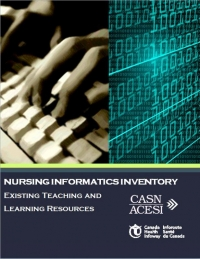 
Also in 2012, The Nursing Faculty E-Health Award was created to support a faculty member from a Canadian school of nursing who demonstrated exceptional leadership and commitment to e-Health in nursing education. This award is a component of the Canadian Association Schools of Nursing (CASN) and Canada Health Infoway’s (Infoway) Clinicians-in-Training Initiative, aimed at improving the preparedness of graduates to work in a technology-enabled environment. In November, 2012 CASN and Infoway announced that the 2012 recipient of the E-Health Award was KPU faculty, June Kaminski!
 "When surveying the field of nursing informatics in Canada, one name that will come up repeatedly is June Kaminski. June emerged as a leader for the inclusion of informatics/e-health in nursing curricula, long before there were calls for it. For the past 23 years June has served as the Program and Curriculum Coordiantor at Kwantlen Polytechnic University, where she integrated nursing informatics into the BSN program. Currently, she is developing a post-baccalaureate program delivered in a hybrid format (classroom and online), and includes the use of i-Pad applications at all levels. "When surveying the field of nursing informatics in Canada, one name that will come up repeatedly is June Kaminski. June emerged as a leader for the inclusion of informatics/e-health in nursing curricula, long before there were calls for it. For the past 23 years June has served as the Program and Curriculum Coordiantor at Kwantlen Polytechnic University, where she integrated nursing informatics into the BSN program. Currently, she is developing a post-baccalaureate program delivered in a hybrid format (classroom and online), and includes the use of i-Pad applications at all levels.
June is a mentor, evidenced by her support of fellow Kwantlen faculty as informatics was integrated through the nursing curriculum. June has helped to develop online courses and e-health curriculum for various organizations, such as the Canadian Healthcare Association. June created an online classroom (at www.nursing-informatics.com), that offers tools that individuals in all areas of nursing across the globe can use to increase their capacity in the area of e-health.
June has published about her research in nursing informatics and education in various national/international publications; her dedication to the dissemination of knowledge about informatics is so great that she created the Canadian Journal of Nursing Informatics in 2006. Through her role as a leader, teacher, mentor, and advocate, June has made an immeasurable impact on e-health in nursing education."
Nursing Informatics at Kwantlen Polytechnic University
Kwantlen Polytechnic University offers The BSN and BSN Advanced Entry Nursing Programs which integrate both theory and practice of Nursing Informatics across the program
in BC, Canada. The faculty of the BSN Nursing Programs fully support that Nursing Informatics is central to nursing in the various domains of practice. Since 1996, Kwantlen Polytechnic University faculty have integrated Nursing Informatics into all semesters of the program.
Learning activities which include:
1. a Cognitive, ("to know" or epistemological),
2. an Interactive, ("to do" or ontological) as well as
3. a Reflective, ("to be" or phenomenological) component
have been written to facilitate students' awareness and initiation into the science and practice of Nursing Informatics.
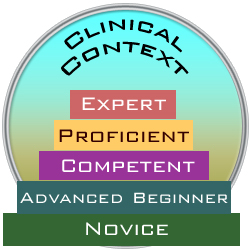 The assumption is that as students use computers to manage information in their student role, they will more readily use their critical thinking
skills to learn related applications in their work as nurses. The BSN & BSN-AE Nursing Programs curriculum is designed to prepare caring nurses as "knowledge workers" for the changing economy of this new millennium. The assumption is that as students use computers to manage information in their student role, they will more readily use their critical thinking
skills to learn related applications in their work as nurses. The BSN & BSN-AE Nursing Programs curriculum is designed to prepare caring nurses as "knowledge workers" for the changing economy of this new millennium.
The faculty at Kwantlen are committed to the philosophy that Nursing Informatics should be integrated throughout
the program. To meet this directive, learning activities related to Nursing Informatics have been created by June Kaminski for every Nursing course in the programs,
except the Consolidated Practice Experiences in the BSN program and the Capstone courses in the BSN-AE program. Faculty are dedicated to fostering computer literacy in all nursing students, and to help students
realize the need to devise a long term personal plan to keep abreast of the quickly developing field of Nursing Informatics.
Kwantlen Polytechnic University has worked diligently to offer Internet access to every student, and on-campus access to a generous assortment
of up-to-date computers and related technology. Computers are available for student use in a variety of computer labs and areas on the Langley campus, where the nursing program is offered.
The Nursing Informatics learning activities in this program encourage you the student to develop your literacy in a number of computer
applications. Word processing, graphical design, using databases, desk-top publishing, spreadsheets, using the Internet, web page design,
multimedia design and the use of Nursing Information Systems (NIS) are some examples.
Note: the BSN learning activities are historic. June is now developing the BSN-PB learning activities since she is the current Program and Curriculum Coordinator for this new blended post-degree nursing program.
Concepts such as caring, empowerment, self-reflection and expression, computer literacy, confidentiality, bioethical decisions, networking,
patient education, community development and cyberphobia represent some of the issues and actions explored.
With the advent of this online version of the Kwantlen Polytechnic University BSN and BSN-AE Program's Nursing Informatics learning activities in 1999, new modes of interaction and computer use were made possible. As both faculty and students become more comfortable and adept in using computer applications, creative use of computers can become more prevalent in the program. In time, interactive communication using computers will occur as easily as in class communication.
As well, more extensive web site design; use of virtual reality; establishing links with local health care agencies, and with schools in other national or global areas can eventually be incorporated. The possibilities are endless - only availability of funds, level of computer literacy, commitment and access to knowledge about new developments in the field inhibit the process.
As Nursing Informatics develops in Canada as a recognized component of nursing, Kwantlen Polytechnic University Nursing faculty plan to offer related education in an increasingly sophisticated and creative way. Our goal is to assist nursing students to become aware of and comfortable using the diverse computer applications available in working with clients both in the community and in hospital settings. Faculty intend to acquaint nursing students with computers as "enabling tools" for nursing practice, education, administration, and research. We hope that our students find value in these learning activities and enjoy their initiation into the science and practice of Nursing Informatics.
NEXT: NURSING INFORMATICS LEARNING ACTIVITIES.... . .
REFERENCES
Canadian Nurses Association. (2006). E-nursing strategy for Canada. Ottawa: Author.
Canadian Nurses Association. (2004). Position statement: Promoting Nursing history. Ottawa: Author.
Canadian Nurses Association. (2003, January). International classification for nursing practice: Documenting nursing care and client outcomes. Nursing Now: Issues and trends in Canadian nursing, Number 14. Ottawa: Author.
Canadian Nurses Association. (2001). What is nursing informatics and why is it important? Nursing Now: Issues and trends in Canadian nursing, Number 11. Ottawa: Author.
Canadian Nurses Association. (2000). Collecting data to reflect nursing impact: A discussion paper. Ottawa: Author.
Canadian Nurses Association. (1993). CNA policy statement on HI:NC. Ottawa: Author
Hebert, M. (1999). National Nursing Informatics Project: Discussion paper. Ottawa: Canadian Nurses Association.
|